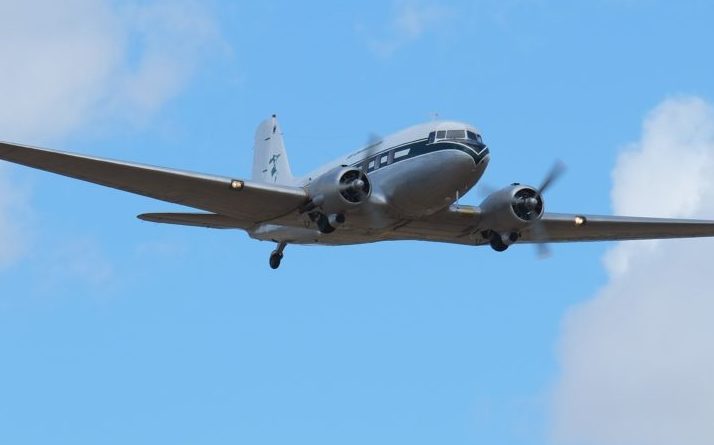High Emissions Won’t Fly: EPA to Set Fegulations for Aircrafts
Article by Hannah Klaus
While emission controls in the transportation sector have been primarily focused on motor vehicles, the environmental impact of aircraft has been an afterthought for national and international agencies. One of the first major international efforts to regulate aviation emissions occurred about twenty years when the Kyoto Protocol invited developed countries to pursue these regulations through the United Nations International Civil Aviation Organization (ICAO) (1). Within the past five years, the ICAO has been working to develop international emissions standards for aircraft. The Environmental Protection Agency (EPA) and the Federal Aviation Administration are working to achieve these emissions reductions (1).
The EPA was not able to develop regulations for aviation within the Clean Air Act until it proved an “endangerment finding”, which shows that a particular greenhouse gas, carbon dioxide for jet fuel emissions in this case, is harmful to human health (4, 6). The EPA made a proposal, this week, that greenhouse gas emissions for airplane jet engine exhaust contributes to climate change and is harmful to human health and welfare. If approved, the proposal will be integrated into the Clean Air Act (1). The U.S. recently sent a paper to the ICAO indicating the time in which it intends to set regulations for domestic aviation emissions under the Clean Air Act (1).
Flying is in no sense easy on the earth’s climate. According to GreenSkies, an alliance of organizations and citizens concerned with aviation’s environmental effects, one flight from Europe to New York generates the same quantity of carbon dioxide emissions as the quantity emitted from heating and providing electricity for an European home for an entire year (2). According to the EPA, aviation emissions account for 12 percent of all U.S. greenhouse gas transportation emissions (7). Tempering aviation emissions will aid the U.S. in its allegiance to the Paris Climate agreements in which the international community has set a goal of preventing global for reaching 2 degrees Fahrenheit above preindustrial levels (8).
Based on the timeline given by the EPA to develop and implement the regulations, they will not be in place during the Obama administration. Part of the reason for this rather lengthy timeline is that the agency has decided to wait for international negotiations on limiting aviation carbon emissions to be complete before publishing its final regulations. Once determined and made public, these regulations will become legally binding (6). The airline industry has made honorable efforts in the past to increase efficiency and minimize emissions by building lighter planes and even looking into using expensive biofuels (6). For example, JetBlue recently made an agreement with SG Preston, a bioenergy company to purchase renewable jet fuel for its planes. This is one of the largest renewable jet fuels deals in aviation history (5). The ICOA has been working with the European Union (EU) to curb aviation emissions through market-based strategies. This effort would work similarly to the EU emissions trading system, which is a cap and trade market for carbon dioxide emissions from industries (3).
- “Aircraft.” EPA. Accessed October 06, 2016. https://www3.epa.gov/otaq/aviation.htm.
- “Climate Change.” AEF. Accessed October 6, 2016. http://www.aef.org.uk/downloads/Factsheetclimate.pdf.
- “Consultation on Market-based Measures to Reduce the Climate Change Impact from International Aviation.” European Commission. September 3, 2016. Accessed October 06, 2016. http://ec.europa.eu/clima/news/articles/news_2016030901_en.htm.
- “Endangerment and Cause or Contribute Findings for Greenhouse Gases under the Section 202(a) of the Clean Air Act.” EPA. Accessed October 06, 2016. https://www.epa.gov/climatechange/endangerment-and-cause-or-contribute-findings-greenhouse-gases-under-section-202a.
- JetBlue. “JetBlue Makes One of History’s Largest Biojet Purchase Agreements.” Biodiesel Magazine. September 21, 2016. Accessed October 6, 2016. http://www.biodieselmagazine.com/articles/1658024/jetblue-makes-one-of-historys-largest-biojet-purchase-agreements.
- Mouawad, Jad, and Coral Davenport. “E.P.A. Takes Step to Cut Emissions From Planes.” The New York Times. June 10, 2015. Accessed October 6, 2016. http://www.nytimes.com/2015/06/11/business/energy-environment/epa-says-it-will-set-rules-for-airplane-emissions.html.
- “Regulations & Standards: Aircraft | Transportation and Climate.” EPA. Accessed October 06, 2016. https://www3.epa.gov/otaq/climate/regs-aviation.htm.
- “The Paris Agreement – Main Page.” The Paris Agreement – Main Page. Accessed October 06, 2016. http://unfccc.int/paris_agreement/items/9485.php.


hael Keane could be reunited at Old Trafford with Paul Pogba and Jesse LingardManchester City have been monitoring things, while former club United, who have a sell-on clause could do a Pogba and bring the academy graduate back to Old Trafford.